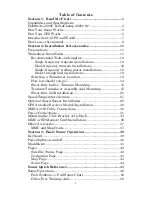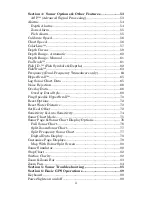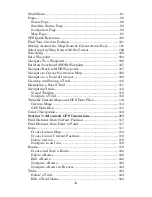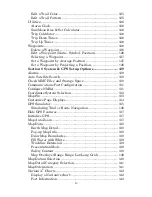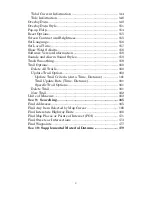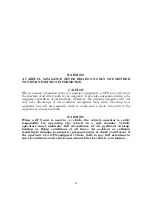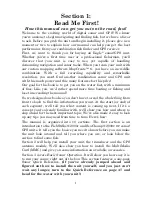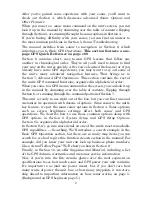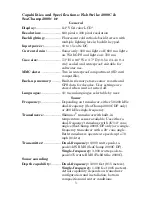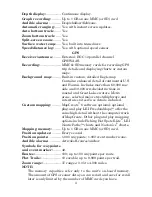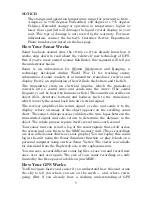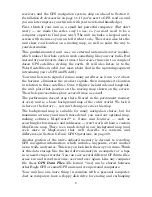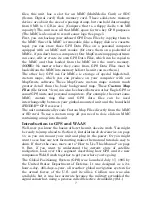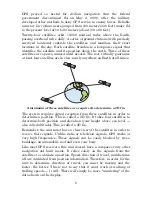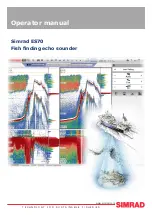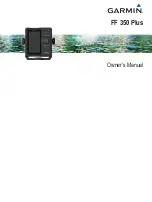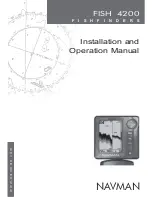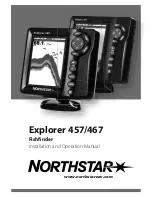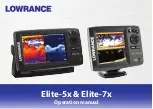
9
GPS is plenty accurate for route navigation, but the U.S. Federal
Aviation Administration has special needs for aircraft traffic control
that go beyond basic GPS. The FAA has a plan under way to boost GPS
performance even further with its Wide Area Augmentation System, or
WAAS. This GPS add-on will include a time control element that will
help airliners fly closer together while avoiding collisions. In addition to
carefully spacing airplanes along travel corridors, WAAS will
eventually make instrument landings and takeoffs more accurate as it
replaces existing aviation navigation systems.
Non-aviators can use WAAS signals to make their GPS navigation even
more accurate. Your unit receives both GPS and WAAS signals. WAAS,
however, has some limits you should know about.
First, the U.S. government has not completed construction of the WAAS
system, so it is not yet fully operational. The ground stations are in place,
but only a few of the needed WAAS satellites have been launched.
WAAS
can
boost the accuracy of land GPS navigation, but the system is
designed for aircraft. The satellites are in a fixed orbit around the
Equator, so they appear very low in the sky to someone on the ground
in North America. Aircraft and vessels on open water can get
consistently good WAAS reception, but terrain, foliage or even large
man-made structures frequently block the WAAS signal from ground
receivers.
You'll find that using your GPS receiver is both easy and amazingly
accurate. It’s easily the most accurate method of electronic navigation
available to the general public today. But remember this receiver is
only a tool. Always have another method of navigation available, such
as a map or chart and a compass.
Also remember this unit will always show navigation information in
the shortest line from your present position to a waypoint, regardless of
terrain! It only calculates position, it can’t know what’s between you
and your destination. It’s up to you to safely navigate around obstacles,
no matter how you’re using this product.
How to use this manual: typographical conventions
Many instructions are listed as numbered steps. The keypad and arrow
"keystrokes" appear as boldface type. If you're in a real hurry (or just
need a reminder), you can skim the instructions and pick out what
menu command to use by finding the boldface command text. The
following paragraphs explain how to interpret the text formatting for
those commands and other instructions:
Summary of Contents for FishStrike 2000
Page 46: ...38 Notes ...
Page 96: ...88 Notes ...
Page 172: ...164 Notes ...
Page 192: ...184 Notes ...
Page 197: ...189 Notes ...
Page 198: ...190 Notes ...

